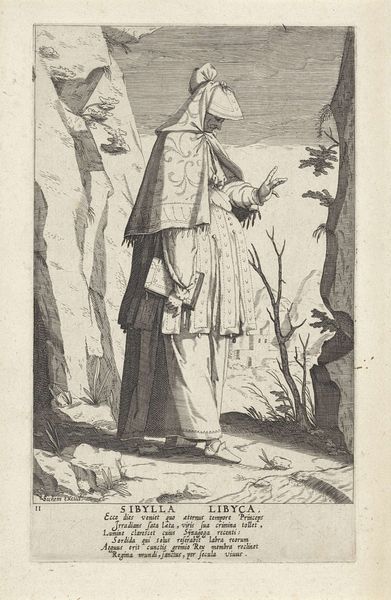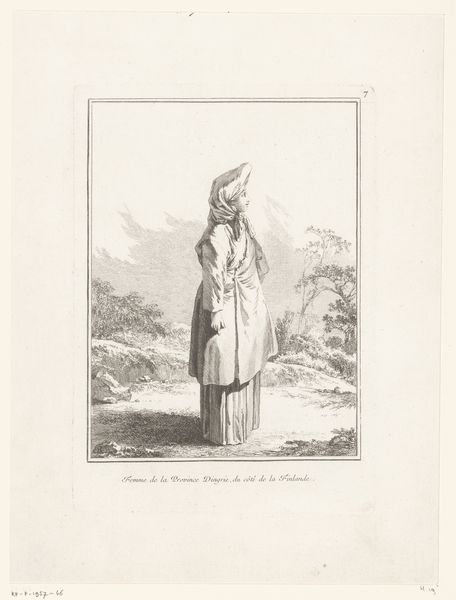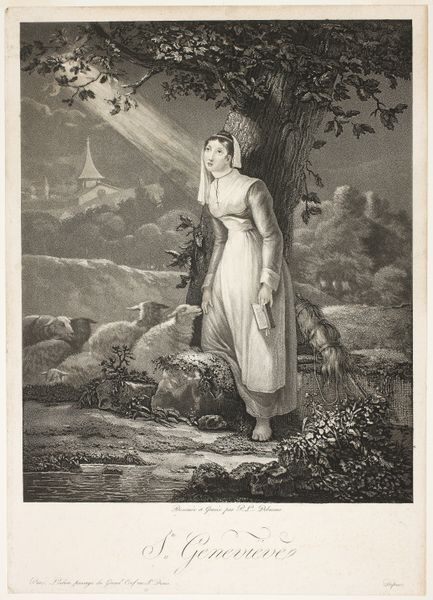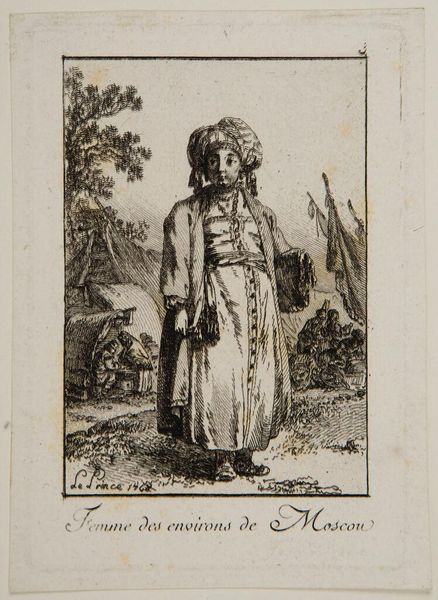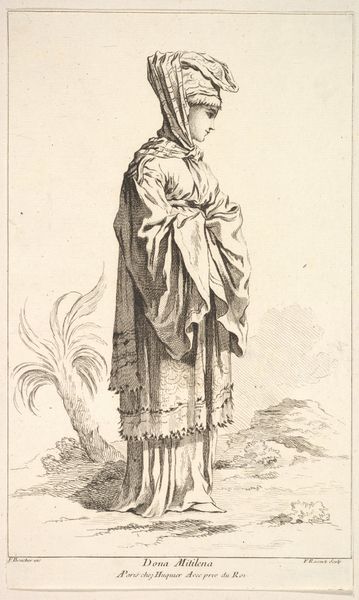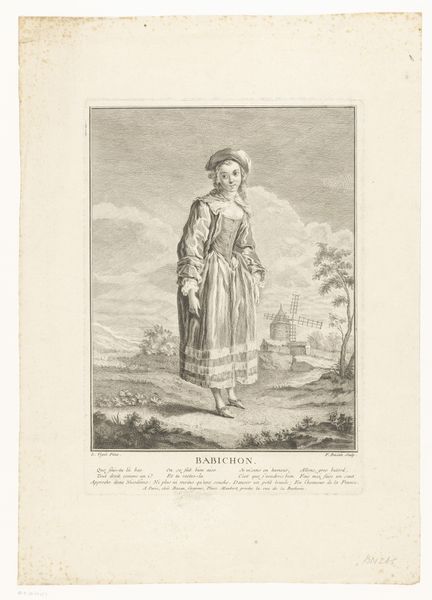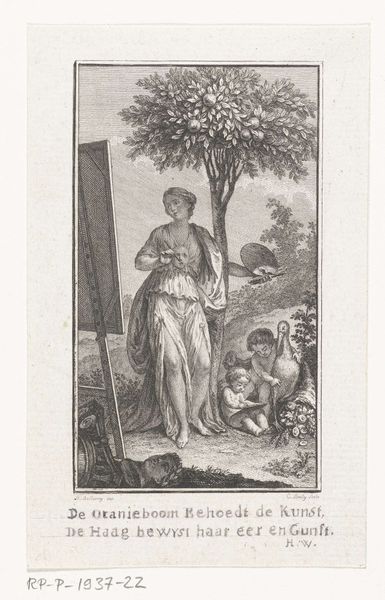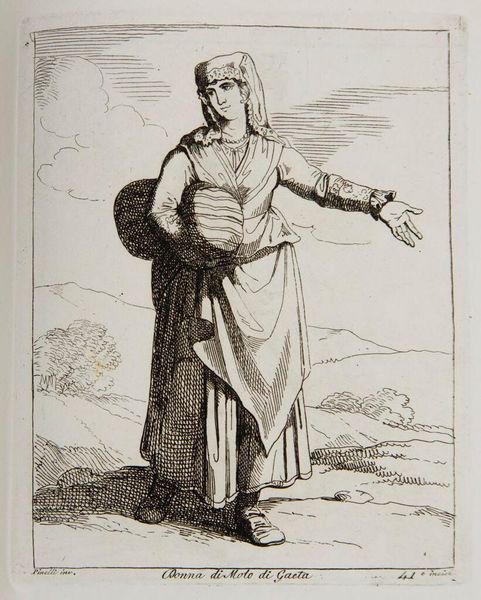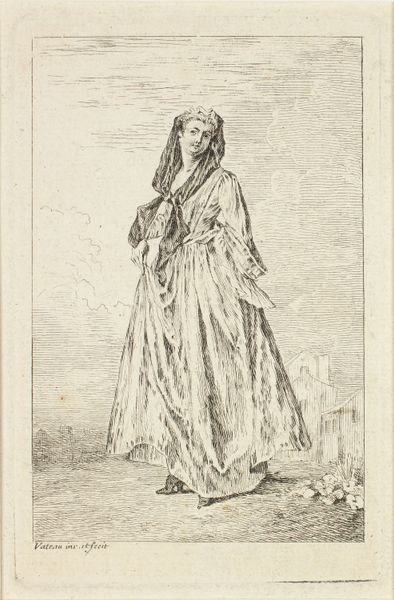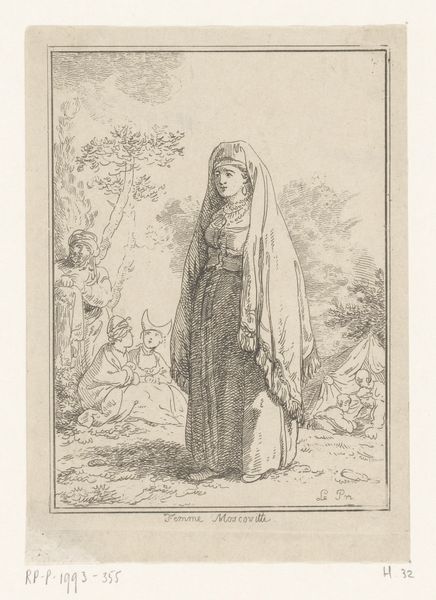
Bondepige fra Calabrien (Paysanne dela Calabre) 1760s
0:00
0:00
Dimensions: 308 mm (height) x 226 mm (width) (plademål)
Curator: Let’s consider “Bondepige fra Calabrien”, or “Paysanne de la Calabre,” created in the 1760s, now residing at the SMK, Statens Museum for Kunst. It is an etching by Rose Angélique Moitte, a delicate yet striking print. Editor: The stark monochrome immediately lends it a timeless quality. The contrast between the figure and the elaborate background—a landscape punctuated by a waterfall and classical ruins—is rather compelling. It almost feels like a stage setting. Curator: Indeed. Moitte’s skillful etching creates a fascinating juxtaposition. We have the peasant woman, grounded in her everyday attire, presented against the backdrop of classical architecture and picturesque nature. Her clothing, with its visible weave, points to the local textile production of the Calabrian region and speaks to a material culture rooted in place. Editor: And what does it tell us about the period? Is it just aesthetic romanticization or is there an underlying tension? Curator: It certainly taps into the 18th-century fascination with the ‘noble savage’ and the idyllic rural life. However, the artist uses printmaking, a reproductive medium, to make such images widely accessible. By disseminating images of rural workers Moitte actively helped shape—and commodify—ideas about labor and regional identities. Editor: So it becomes more than just an image; it becomes a vehicle for the circulation of social and political ideologies. The controlled line work almost flattens the details, making it reproducible for mass consumption, doesn't it? The visual language becomes one of symbolic exchange. Curator: Precisely. It speaks to how even seemingly straightforward depictions are deeply intertwined with social forces and material practices. And these visual and social textures become inseparable, influencing perceptions of rural life, work, and class structures. Editor: That’s a valuable point to keep in mind when approaching any historical image, and the impact is clear when we consider Moitte’s technical expertise here. Curator: Absolutely, understanding these relationships deepens our grasp of the piece. Thanks!
Comments
No comments
Be the first to comment and join the conversation on the ultimate creative platform.
